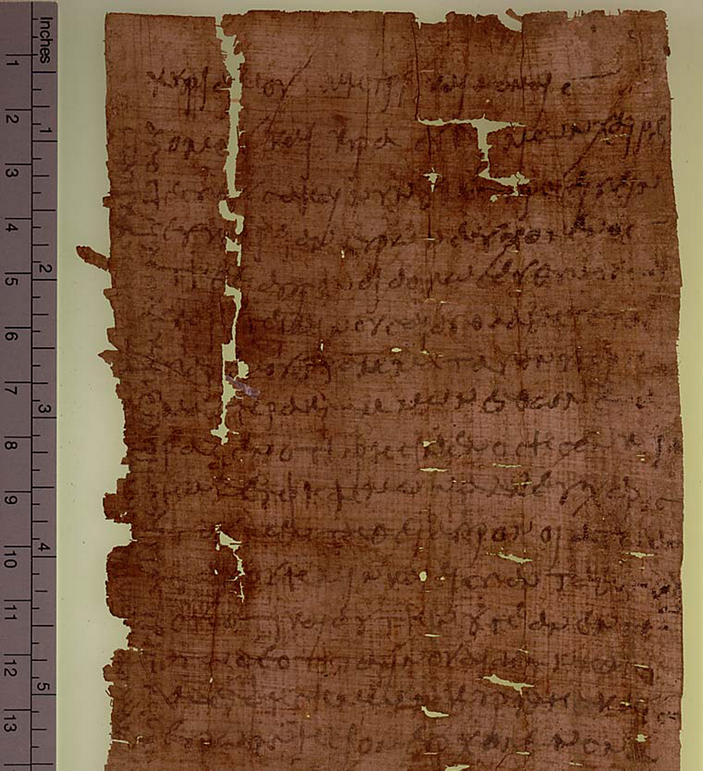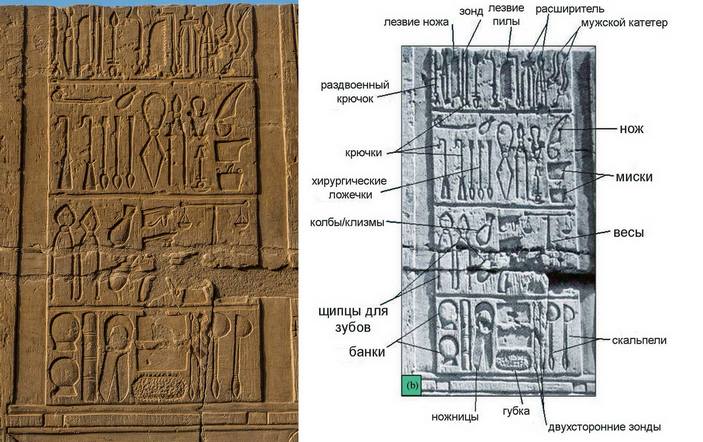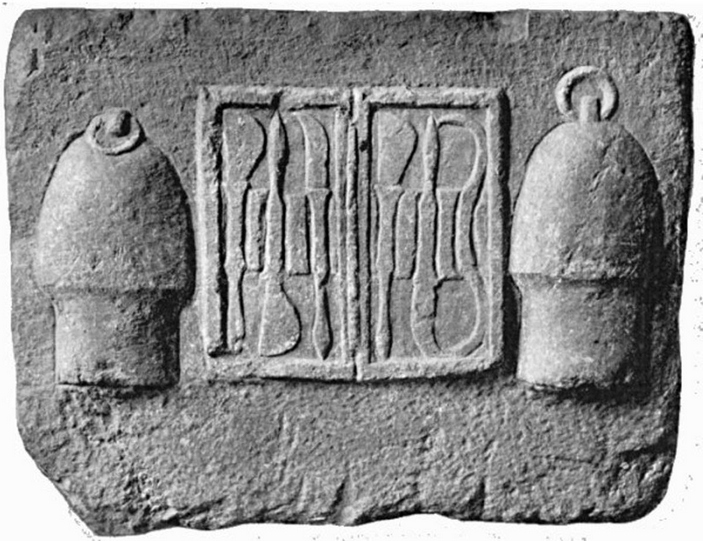В конце IV века н. e. некто Эвдемон написал письмо домой в египетский город Оксиринх своим родным. Письмо написано чернилами на папирусе. На обороте письма он указал адрес: «передать в лечебницу», а в самом письме попросил прислать ему лекарства и инструменты. Из всего этого следует, что Эвдемон был врачом. В картинке дня рассказываем, что представляла собой тогда медицина, и почему письмо написано на древнегреческом языке.
Письмо врача

![]()
В конце IV века н. e. некто Эвдемон написал письмо домой в египетский город Оксиринх своей матери, бабушкам и жене (или сестре) Кире. Письмо написано чернилами на папирусе. На обороте письма он указал адрес: «передать в лечебницу», а в самом письме попросил прислать ему лекарства и инструменты. Из всего этого следует, что Эвдемон был врачом.
Письмо написано на древнегреческом языке. Вот его перевод:
«Дорогим маме, бабушкам, а также Кире шлет привет Эвдемон. Как только у меня появилась возможность, я поспешил написать вам, молясь божественному провидению, чтобы вы получили мое письмо в здравии и добром расположении духа. Я переволновался, когда Геракламмон приехал и рассказал, что наша сестра Кира заболела. Но благодарю божественное провидение, которое помогает нам везде и во всем, что она выздоровела! Сообщите ей, что льняная одежда нашей сестры Кириллы уже готова, и если я найду кого-то знакомого, едущего к вам, то пошлю эти наряды вместе с пурпурной накидкой и туфлями. Я получил также товары от вышивальщицы Елены, но нашел в пакете только четыре книги. А вы же написали, что послали пять! Всё остальное я тоже получил, кроме одного сосуда с животным жиром. Пусть наш брат Феодор поищет. и выяснит. он положил сосуд с глазными бальзамами вместо сосуда с жиром. Пришлите мне лист бронзы, чтобы я мог изготовить новые хирургические инструменты, а также нагреватель и банки, чтобы у меня был набор из пяти штук. Пришлите также три фунта мазей, смешанных из разных ингредиентов. в том числе вяжущие. ».
Последний пункт этого списка не уместился на папирусе, поэтому Эвдемон повернул письмо и дописал несколько строчек сбоку на полях, перпендикулярно основному тексту. В конце письмо обрывается. На обороте сохранилась адресная строка: «Отдать в лечебницу. От Эвдемона».
Как видно, вопросы, связанные с жизнью семьи, для Эвдемона стоят на первом месте, и только потом он переходит к своим профессиональным проблемам. Он просит прислать ему: лист бронзы для изготовления хирургических инструментов (или, в другом переводе, складной бронзовый ящичек на шарнирах для хранения хирургических инструментов); нагреватель (возможно, это было что-то вроде грелки); медицинские банки; три фунта различных мазей.

![]()
An image of surgical instruments on the walls of the temple in Kom-Mesbo, Egypt. Left – Photo © Bruno Bottier from Flickr.com. On right – Image from article A. Saber, 2010. Ancient Egyptian Surgical Heritage
Medical bank treatment is first mentioned in the EBERS papyrus around 1500 BC. e. In Roman time, medical banks were made mainly from bronze, although the archaeologists also find glass jars. In addition to the usual method of use using the cans, it was also bleeding – at that time it was one of the most popular medical practices. For this, the skin in a certain place was scratched with a knife, and then put on a damaged section of the jar. At the same time, it was pre-heated so that the air inside the jar as a cooling vacuum was formed. Interestingly, Eudemon in the letter requests a few such cans, apparently different sizes so that he has a set for different parts of the body.

![]()
Tools with tools for bleeding from Asclepia temple in Athens (Asklepieion of Athens): Scalpels in the folding box and two medical banks, 320 BC. e. Image from article H. Christopoulou-Aletra, N. Papavramidou, 2008. Cupping: An Alternative Surgical Procedure Used by HipPocratic Physicians
Mazi then were most often the eye, such an ointment was called collimiri (see collyrium), but there were ointments and from headaches or from acne. The composition of ointments included a variety of components: plant extracts, honey, grated minerals, parts of the animal body.
Also in a letter, Eudemon indicates that he sent five books, and he received only four. Perhaps these were medical directories or recipe collections. In Egypt, 1,700 years ago there was no regular mail, no delivery service: All letters and parcels needed to be sent with the messenger or with the body. In private papyrus letters, requests are often found to send clothes, documents, money, medicines or books.
We do not know anything about eudemona, nor about his family, nor about his hospital (it could be a private practice at home, perhaps family) besides what he himself wrote in his papyrus letter. Where does he write? Why did he get away from his family? Why asks to send him medical devices and materials? Papyrus was found with a letter at the beginning of the twentieth century in the ruins of ancient oxirin, along with tens of thousands of other papyrius documents: private letters, receipts, debt receipts, blocks with works of ancient Greek literature (see Oxirinchian papyrus). Medical texts are also found among papyrus fragments: reports and certificates of doctors, recipes of ointments, textbooks, reference books on ophthalmology, papyrus with the oath of hippocratic and scraps of various writings about medical art.
Eudemon wrote his letter in ancient Greek, since he, apparently, belonged to the Greek population of Egypt. At this time, Egypt has been a Roman province for several centuries. But even earlier, about 800 years before Eudemon, the country was conquered by Alexander Macedonian, who led to the huge army of Macedonians and Greeks.They brought to Egypt with an Hellenistic culture and built new cities in which most residents were Greeks. The Greek language was put on Egypt also from above – as the language of the ruling dynasty of Ptolemyev and officials.
Ancient Egypt was famous in the ancient world of his medicine. The world's first medical treatises-guidelines for the treatment of disease reached us on Papiral scrolls in ancient Egyptian language recorded by a heeratic letter: this is, for example, Papyrus Edwin Smith (XVII century BC), Papyrus Ebers (XVI century BC . er) and Papyrus Brugsch (Brugsch Papyrus, the XIV-XIII centuries. BC.). The traditions of Egyptian doctors were transferred from generation to generation and persisted in Ptolemeevskoye and Roman time. Eudemon, most likely, was a representative of the Greco-Roman tradition of medicine, which absorbed in itself, including Egyptian elements.

